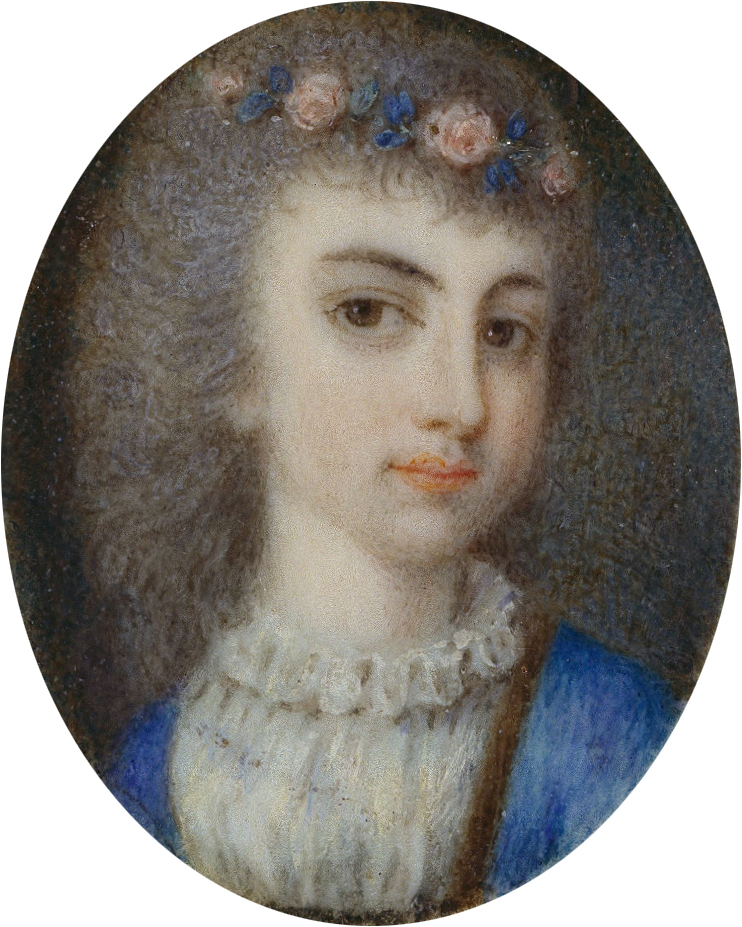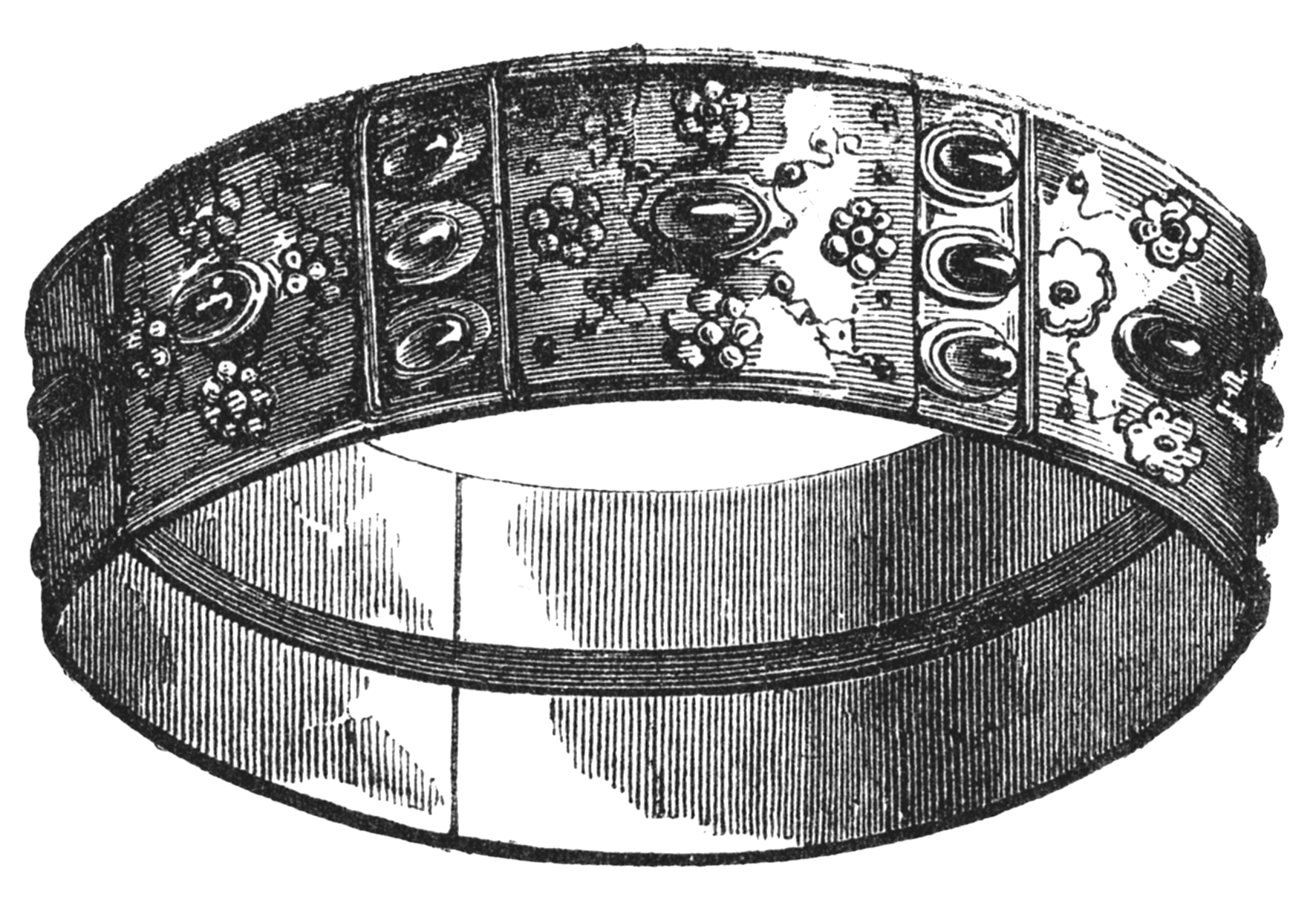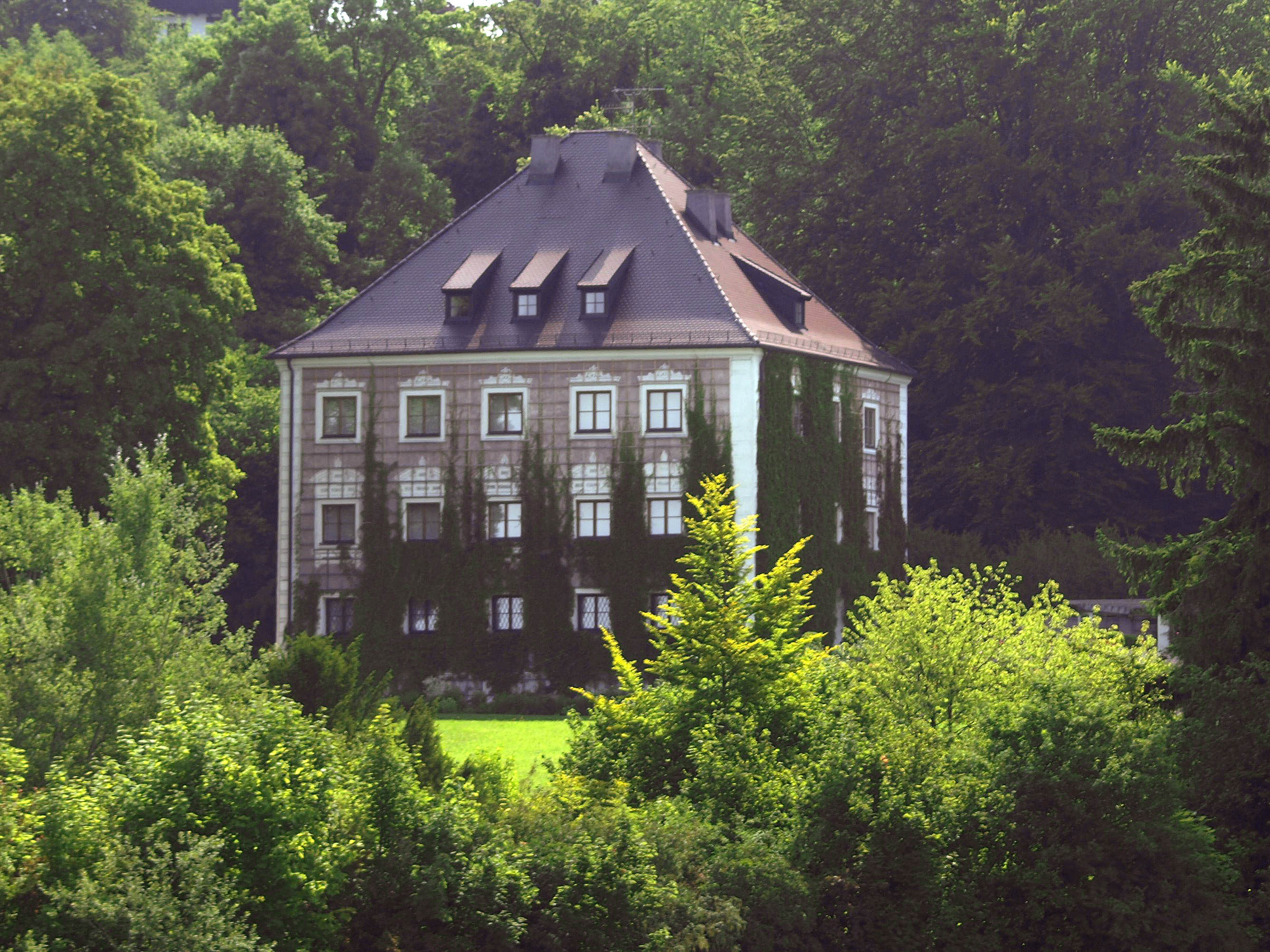|
Maria Leopoldine Of Austria-Este
Archduchess Maria Leopoldine of Austria-Este (10 December 1776 – 23 June 1848), was an Electress of Bavaria as the second spouse of Charles Theodore, Elector of Bavaria. Life Early life Archduchess Maria Leopoldine Anna Josephine Johanna of Austria-Este was born in Milan on 10 December 1776 as the fourth child and third (but second surviving) daughter of Archduke Ferdinand of Austria-Este and of his wife, Princess Maria Beatrice Ricciarda d'Este. Her father, the second youngest son of Empress Maria Theresa, and her mother were the founders of the House of Habsburg-Este. Although Archduke Ferdinand wasn't as gifted as his eldest brother Joseph II, his rule as Governor General of Lombardy made him extremely popular; he and his wife sought closeness to their subjects and owed their high esteem above all to their social commitment. Ferdinand Karl and Maria Beatrice were loving parents and concentrated on the education of their children. They tried to raise their sons to high pos ... [...More Info...] [...Related Items...] OR: [Wikipedia] [Google] [Baidu] |
List Of Bavarian Royal Consorts
There have been three kinds of Bavarian consorts in history, Duchesses, Electresses and Queens. Most consorts listed are Duchesses. The first ever consort of Bavaria was Waldrada in the 6th century. The final consort was Maria Theresa of Austria-Este (1849–1919), Maria Theresia of Austria-Este in 1913. The longest serving House was the Wittelsbach Dynasty, who played a major role in Bavarian History. During the medieval period under the Wittelsbach Dynasty, Bavaria was split into two parts, Upper and Lower Bavaria. This meant that there may have been more than one Duchess of Bavaria at the same time, due to messy inheritance among heirs. Three of the break-away Wittelsbach families were: Landshut, Munich and Ingolstadt. Since 555 there have been 99 Bavarian consorts: 78 duchesses, 11 queens, 10 electresses and one margravine. The number doesn't add up because Elizabeth of Lorraine and Caroline of Baden, held two titles. There was a few consort that married twice usually their ... [...More Info...] [...Related Items...] OR: [Wikipedia] [Google] [Baidu] |
Countess Palatine Elisabeth Auguste Of Sulzbach
Elisabeth Auguste of Sulzbach (Elisabeth Auguste; 17 January 1721 – 17 August 1794) was the eldest granddaughter of the Elector of the Palatinate Charles III Philip, and by her marriage to Elector Palatine Charles IV Theodore, Electress Palatine and later Electress of Bavaria. Biography Elisabeth Auguste's parents were Joseph Charles of Sulzbach (1694–1729) and Elisabeth Auguste of Neuburg (1693–1728), the latter the daughter of Elector Charles III Philip. On 17 January 1742, she married her cousin Charles Theodore of Sulzbach, who became Elector of the Palatinate in 1742 and Elector of Bavaria in 1777. The marriage was arranged to avoid a potential inheritance dispute within the different family branches. While Charles Theodore was described as learned and interested in the enlightenment, Elisabeth Augusta was described as vivacious, pleasure loving, uneducated and shallow. During the first half of their marriage, she is said to have dominated her spouse, and ... [...More Info...] [...Related Items...] OR: [Wikipedia] [Google] [Baidu] |
Neuburg An Der Donau
Neuburg an der Donau (Central Bavarian: ''Neiburg an da Donau'') is a town which is the capital of the Neuburg-Schrobenhausen district in the state of Bavaria in Germany. Divisions The municipality has 16 divisions: * Altmannstetten * Bergen, Neuburg * Bittenbrunn * Bruck * Feldkirchen * Gietlhausen * Hardt * Heinrichsheim * Herrenwörth * Hessellohe * Joshofen * Marienheim * Maxweiler * Laisacker * Sehensand * Zell History Neuburg has been inhabited since the Bronze Age with artifacts discovered on the hill where the modern palace is located. A Roman settlement was also located on the high hill overlooking the Danube, providing a part of the Limes, the border between the Empire and its Germanic enemies. The massive Neuburg Castle was built during the early Middle Ages by the Aiglolfings, at the site of the old Roman fortress. In 1527 the Wittelsbach Family re-designed the castle into a Renaissance palace, which is what we see today. Neuburg was part of an episcopal see. In ... [...More Info...] [...Related Items...] OR: [Wikipedia] [Google] [Baidu] |
Ljubljana
Ljubljana (also known by other historical names) is the capital and largest city of Slovenia. It is the country's cultural, educational, economic, political and administrative center. During antiquity, a Roman city called Emona stood in the area. Ljubljana itself was first mentioned in the first half of the 12th century. Situated at the middle of a trade route between the northern Adriatic Sea and the Danube region, it was the historical capital of Carniola, one of the Slovene-inhabited parts of the Habsburg monarchy. It was under Habsburg rule from the Middle Ages until the dissolution of the Austro-Hungarian Empire in 1918. After World War II, Ljubljana became the capital of the Socialist Republic of Slovenia, part of the Socialist Federal Republic of Yugoslavia. The city retained this status until Slovenia became independent in 1991 and Ljubljana became the capital of the newly formed state. Name The origin of the name ''Ljubljana'' is unclear. In the Middle Ages, both ... [...More Info...] [...Related Items...] OR: [Wikipedia] [Google] [Baidu] |
Lake Starnberg
Lake Starnberg, or ''Starnberger See'' ) — called Lake Würm, or ''Würmsee'' , until 1962 — is Germany's second-largest body of fresh water, having great depth, and fifth-largest lake by area. It and its surroundings lie in three different Bavarian districts, or ''Landkreise''. The lake is property of the state and accordingly managed by the Bavarian Administration of State-Owned Palaces, Gardens and Lakes. Located in southern Bavaria southwest of Munich, Lake Starnberg is a popular recreation area for the city and, since 1976, one of the wetlands of international importance protected by the Ramsar Convention. The small town of Berg is famous as the site where King Ludwig II of Bavaria was found dead in the lake in 1886. Because of its associations with the Wittelsbach royal family, the lake is also known as Fürstensee (Prince's Lake). It is also mentioned in T. S. Eliot's poem ''The Waste Land''. Overview The lake, lying in a ''zungenbecken'' or glacial hollow, was create ... [...More Info...] [...Related Items...] OR: [Wikipedia] [Google] [Baidu] |
Berg Castle (Bavaria)
Berg Palace (german: Schloss Berg) is a manor house situated on the east bank of Lake Starnberg in the village of Berg in Upper Bavaria, Germany. The site became widely known as the last residence of King Ludwig II of Bavaria and location of his disputed death. Today, it serves as residence of Franz, Duke of Bavaria, head of the house of Wittelsbach. History Ferdinand Maria, Elector of Bavaria, acquired a piece of land on the banks of Lake Starnberg in 1676 from the Horwarth family and ordered the construction of Berg Palace. Ferdinand used it for festivities, but it reached its zenith under his successors, elector Max Emanuel and Emperor Charles VII, when it served as the ambiance for spectacular entertainment and hunting events. Between 1849 and 1851 King Maximilian II instructed the architect Eduard Riedel to redesign the site in Neo-Gothic style, with added crenellations and four towers, for which the king bought additional land. Maximilian's son Ludwig II of Bavar ... [...More Info...] [...Related Items...] OR: [Wikipedia] [Google] [Baidu] |
Theatine Church, Munich
, image = MünchenTheatinerkirche a.jpg , pushpin map = Bavaria#Germany , pushpin label position = top , coordinates = , location = Salvatorplatz 2aMunich, Bavaria , country = Germany , denomination = Roman Catholic , website = , bull date = , founded date = , founder = , dedication = Saint Cajetan , dedicated date = , consecrated date = , status = Parish church , functional status = Active , heritage designation = , designated date = , architect = , style = Baroque , years built = 1663–16881676–1690 (towers)1765–1768 (façade) , groundbreaking = , completed date = , capacity = 400 , length = , width = , width nave = , height ... [...More Info...] [...Related Items...] OR: [Wikipedia] [Google] [Baidu] |
Munich
Munich ( ; german: München ; bar, Minga ) is the capital and most populous city of the States of Germany, German state of Bavaria. With a population of 1,558,395 inhabitants as of 31 July 2020, it is the List of cities in Germany by population, third-largest city in Germany, after Berlin and Hamburg, and thus the largest which does not constitute its own state, as well as the List of cities in the European Union by population within city limits, 11th-largest city in the European Union. The Munich Metropolitan Region, city's metropolitan region is home to 6 million people. Straddling the banks of the River Isar (a tributary of the Danube) north of the Northern Limestone Alps, Bavarian Alps, Munich is the seat of the Bavarian Regierungsbezirk, administrative region of Upper Bavaria, while being the population density, most densely populated municipality in Germany (4,500 people per km2). Munich is the second-largest city in the Bavarian dialects, Bavarian dialect area, ... [...More Info...] [...Related Items...] OR: [Wikipedia] [Google] [Baidu] |
Maximilian I Joseph Of Bavaria
Maximilian I Joseph (german: Maximilian I. Joseph; 27 May 1756 – 13 October 1825) was Duke of Zweibrücken from 1795 to 1799, prince-elector of Bavaria (as Maximilian IV Joseph) from 1799 to 1806, then King of Bavaria (as Maximilian I Joseph) from 1806 to 1825. He was a member of the House of Palatinate-Birkenfeld-Zweibrücken, a branch of the House of Wittelsbach. Early life Maximilian, the son of the Count Palatine Frederick Michael of Zweibrücken-Birkenfeld and Maria Francisca of Sulzbach, was born on 27 May 1756 at Schwetzingen, between Heidelberg and Mannheim. After the death of his father in 1767, he was left at first without parental supervision, since his mother had been banished from her husband's court after giving birth to a son fathered by an actor. Maximilian was carefully educated under the supervision of his uncle, Duke Christian IV of Zweibrücken, who settled him in the Hôtel des Deux-Ponts. He became Count of Rappoltstein in 1776 and took service in 17 ... [...More Info...] [...Related Items...] OR: [Wikipedia] [Google] [Baidu] |
Maximilian Von Montgelas
Maximilian Karl Joseph Franz de Paula Hieronymus de Garnerin de la Thuile, Count von Montgelas (german: Maximilian Karl Joseph Franz de Paula Hieronymus de Garnerin de la Thuille Graf von Montgelas; 12 September 1759 Munich – 14 June 1838 Munich) was a Bavarian statesman, a member of a noble family from the Duchy of Savoy. His father John Sigmund Garnerin, Baron Montgelas (german: Janus Sigmund Garnerin Freiherr von Montgelas), entered the military service of Maximilian III, Elector of Bavaria, and married the Countess Ursula von Trauner. Maximilian Josef, their eldest son, was born in the Bavarian capital Munich on September 10, 1759. Early life Montgelas was educated successively at Nancy, Strasbourg, and Ingolstadt. Being a Savoyard on his father's side, he naturally felt the French influence, which was then strong in Germany, with peculiar force. To the end of his life he spoke and wrote French more correctly and with more ease than German. Nevertheless, the Munich ... [...More Info...] [...Related Items...] OR: [Wikipedia] [Google] [Baidu] |
Hofburg, Innsbruck
The Hofburg ( en, Imperial Palace) is a former Habsburg palace in Innsbruck, Austria, and considered one of the three most significant cultural buildings in the country, along with the Hofburg Palace and Schönbrunn Palace in Vienna. The Hofburg is the main building of a large residential complex once used by the Habsburgs that still includes the Noblewomen's Collegiate Foundation, the Silver Chapel, the Hofkirche containing Emperor Maximilian's cenotaph and the ''Schwarzen Mandern'', the Theological University, the Tyrolean Folk Art Museum, Innsbruck Cathedral, the Congress, and the Hofgarten (Court Garden). The original Hofburg palace was constructed from several elements under Archduke Sigismund around 1460. This structure included sections of medieval fortifications that ran along the eastern city wall. The building incorporated the Rumer Gate, which was later converted into the Heraldic Tower in 1499 by Jörg Kölderer under Emperor Maximilian I. The palace was expanded ... [...More Info...] [...Related Items...] OR: [Wikipedia] [Google] [Baidu] |
Waldburg-Zeil
Waldburg-Zeil was a County and later Principality within Holy Roman Empire, ruled by the House of Waldburg, located in southeastern Baden-Württemberg, Germany, located around Schloss Zeil, near Leutkirch im Allgäu. History Waldburg-Zeil was a partition of Waldburg-Wolfegg-Zeil. Originally ruled by Truchesses (stewards), Waldburg-Zeil was elevated to a County in 1628, and a Principality in 1803 shortly before being mediatised to Württemberg in 1806. In 1674, Waldburg-Zeil was partitioned between itself and Waldburg-Wurzach. Count Francis Anthony inherited Waldburg-Trauchburg in 1772 (the districts of Friedburg and Scheer were later sold to Thurn und Taxis in 1785), and Steward Froben and Steward Henry of Waldburg-Wolfegg partitioned Waldburg-Waldburg after the death of Steward Gebhard. Rulers of Waldburg-Zeil Stewards of Waldburg-Zeil (1589–1628) * Froben (1589–1614) * John James I (1614–28) Counts of Waldburg-Zeil (1628–1803) * John James I (1628–74) ... [...More Info...] [...Related Items...] OR: [Wikipedia] [Google] [Baidu] |







